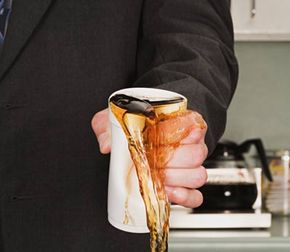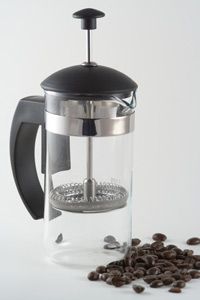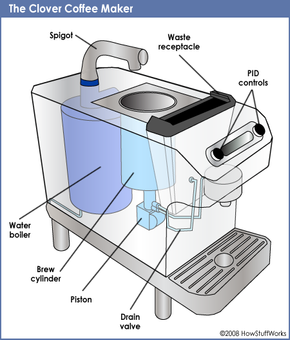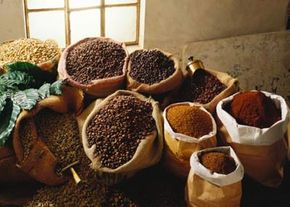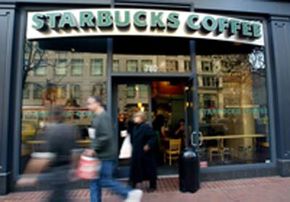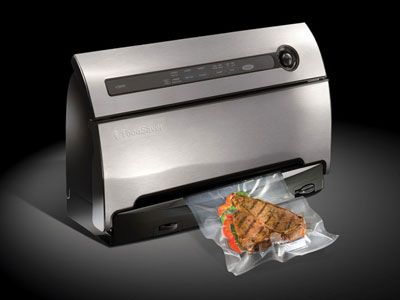Next time you wait in line at the coffee shop, eavesdrop on the other customers. You'll hear them calling out lots of elaborate espresso orders, from nonfat vanilla lattes to peppermint mochas with whipped cream. Accommodating baristas bustle around pulling espresso shots, steaming milk, all so you have your morning coffee exactly the way you like it. Meanwhile, drip coffee sits forlornly in a pot in the back. It could sit there for hours. It costs about a dollar. It's functional, sure, and gets the job done when you need a pick-me-up. But it's probably the least exciting thing in the shop.
One machine aims to bring the glamour back to drip coffee: the Clover coffee maker. It was developed in 2005 by the Seattle-based Coffee Equipment Company. As opposed to a batch brew that yields enough cups to get a business through the morning rush, the Clover brews one cup of coffee at a time. With a Clover, the barista and the customer can customize the way the coffee tastes by tinkering with the water temperature and the brewing time.
Advertisement
The result is not the kind of coffee you add milk or sugar to, and it sure doesn't begin with anything instant. This coffee maker has become a way to highlight coffee beans from around the world, beans that may cost almost a hundred dollars a pound. The Clover has coffee drinkers reaching into a wine lover's vocabulary for words like earthy, citrusy and spicy. Connoisseurs praise the floral undertones or deride a grassy flavor, and café owners have found customers willing to pay latte prices for drip coffees.
In 2006, the first year Clover was on the market, about 100 machines were sold to independent coffee shops, and sales tripled the following year [source: The Economist]. Depending on where you live, finding a Clover coffee maker might have been as difficult as finding its four-leafed namesake. But you might be seeing a lot more of them. In March 2008, Starbucks announced its purchase of the Coffee Equipment Company. All future Clovers will appear exclusively in Starbucks.
What does this mean for the coffee industry? Does the Clover really produce better-tasting coffee, and even if it did, would you pay five bucks for it? What can this machine do that your coffee maker at home can't? On the next page, we'll take a look inside the Clover.
Advertisement
